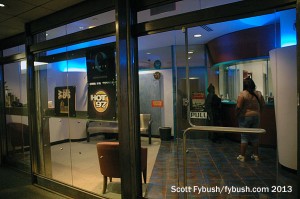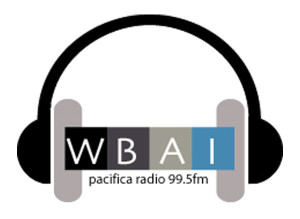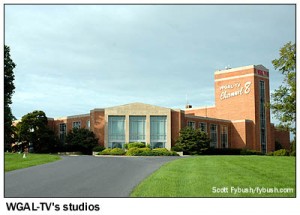NorthEast Radio Watch 12/8/2025: Cichon’s Back in Buffalo
In this week’s issue… Veteran newsman returns - Remembering NY's Leitner, RI's Jones - CT AM saved - Maine AM moves - "Indie" adds suburban signals
In this week’s issue… Emmis’ double-reverse-backflip NYC station swap – Granite (mostly) exits TV – Snow collapses studio roof – Two exit Boston’s WCVB – LPFM goes full-power – WBAI mess remains messy
By SCOTT FYBUSH
*We’re not much in the habit of making prognostications here about what lies ahead in each new year of covering the radio and TV industry. And it’s a good thing we’re not in the prediction business, because if we were, there’s no way we’d have pegged the start of 2014 as a time of record prices for big-market radio stations.

That surprise came to us from NEW YORK City, where Emmis’ $133 million deal to buy WBLS (107.5) and WLIB (1190) from YMF Media closes the circle on one of the oddest – and ultimately most profitable – ownership transfers in pretty much the entire history of American radio.
Before we dig into the backstory of what makes this deal unusual, here are the basics: by adding WBLS, in particular, to its existing WQHT (97.1), Emmis will create a one-two punch of urban FM that will give it a dominant position with that chunk of the New York audience, competing only against Clear Channel’s WWPR (105.1) on the younger end and with essentially no competition for older African-American listeners.
Even if that demographic is becoming a smaller part of New York’s radio landscape – and it is – the size of this deal shows that it’s still a valuable market segment. Consider, by way of comparison, the last two class B FM stations to change hands in the city: CBS paid $75 million in 2012 for what’s now WFAN-FM (101.9), while Cumulus paid $40 million for the somewhat lesser signal of what’s now WNSH (94.7 Newark). Those, of course, were stick-value deals, where the buyer was picking up only the license and transmitter, not an ongoing format or advertiser list. And so we have to go back one sale further to find a comparison, which brings us right back to Emmis and to the reasons this WBLS deal is so, so very interesting:
[private]
Let’s rewind to April 2012, shall we, and the Thursday afternoon that set the radio industry abuzz. Emmis New York was then a two-FM cluster, having recently shed 101.9 to Merlin Media, and its remaining FMs were both squarely aimed at the urban audience: WQHT with younger-leaning hip-hop and WRKS (98.7) with an older-skewing R&B format that was rapidly shedding revenue. In a deal then valued at $96 million, Emmis spun off the intellectual property of WRKS to YMF, which brought some airstaff from 98.7 over to WBLS, created a new subsidiary to hold the 98.7 license, and entered a 12-year deal to lease the 98.7 signal to Disney to become the new FM home of ESPN Radio in New York.
 That deal, which we explored very deeply in the April 30, 2012 issue of NERW, was – and still is – unique: for all practical purposes, 98.7 became ESPN’s radio station (so much so that most of the coverage of the Emmis/YMF sale didn’t even mention Emmis’ continued ownership of the 98.7 license), and while Emmis still holds the 98.7 license, it’s also reaping nearly as much financial benefit as it would have received from an outright sale.
That deal, which we explored very deeply in the April 30, 2012 issue of NERW, was – and still is – unique: for all practical purposes, 98.7 became ESPN’s radio station (so much so that most of the coverage of the Emmis/YMF sale didn’t even mention Emmis’ continued ownership of the 98.7 license), and while Emmis still holds the 98.7 license, it’s also reaping nearly as much financial benefit as it would have received from an outright sale.
The YMF piece of that 2012 deal turns out in retrospect to have been even more interesting than it seemed at the time. While widely reported as a “$10 million” sale of WRKS’ intellectual property, the numbers were even bigger: YMF also agreed to make quarterly payments to Emmis of 15% of any increase in revenue it reaped at WBLS (presumed to be the result of the elimination of competition from WRKS).
And then, a few months later, the ties between YMF and Emmis got even deeper when YMF’s own budget problems forced WBLS and WLIB to move out of their expensive Park Avenue aerie. In need of a new home, and quickly, the YMF stations relocated downtown to the space at Emmis’ Hudson Street studios that had become available with the demise of WRKS. The result wasn’t quite a full-fledged LMA – YMF retained control of its stations under a separate general manager and programming staff, and even had its own separate receptionist sharing space with an Emmis employee at the front desk – but behind the scenes, Emmis quietly began providing some services to WLIB and WBLS that included engineering and IT support. (So quietly, in fact, that few trade publications ever picked up on that piece of the agreement…but that’s why you read NERW, right?)
There are still more unusual twists to this deal: Emmis plans to pay YMF in two chunks, $55 million in cash at closing (with an LMA to start even sooner at $1.3 million a month) and then another $76 million to complete the deal a year from now. And when Emmis takes over full operation of all the stations under its Hudson Street roof, current WQHT general manager Alex Cameron will depart, replaced by current WBLS/WLIB GM Deon Levingston, a veteran of the New York urban radio scene.
Emmis says WBLS/WLIB brought in about $31 million in revenue in 2013 against $16 million in expenses, and it expects to be able to reduce expenses by about $3 million annually by bringing the YMF stations together with WQHT. That values this deal at approximately 7 times cash flow, and that’s an important metric, since it’s been a long time since the market has had a New York City FM station transaction to examine that includes both a license and an operating format. Is it a sign of a healthy market? It certainly doesn’t hurt (and as we’ll see deeper into the column, there’s lots of sales action all of a sudden on the TV front, too) – but it’s also true that there’s not much else likely to be for sale in New York or other big markets any time soon, and few prospective deep-pocketed buyers so long as Clear Channel and CBS Radio are constrained by ownership caps.
And what does it all mean for listeners? Very, very little: this is a financial deal, not a programming one, and for the first time in many years, we can safely say that this sale will come with essentially no change in programming. With WRKS out of the picture, WBLS has settled in nicely as the default R&B choice in town, and Emmis is expected to maintain the status quo there. As for WLIB, it’s clearly an afterthought in this deal, running most of the day with a satellite-delivered gospel format that makes barely a blip in the ratings but appears to be very modestly profitable. (And to think they downgraded WOWO two decades ago for that?)
*Before Emmis and YMF reset the expectations game on the radio side with their New York deal, the other big station-sale headlines for the week were happening upstate (and around the country, too), where Granite announced a pair of deals that nearly take it out of the television business.
 We expected the first deal – as we told you in last week’s NERW, Granite was just hours away from selling its WKBW (Channel 7) in Buffalo to E.W. Scripps, along with a second station, and we correctly pegged that second station as MyNetwork affiliate WMYD (Channel 20) in Detroit, which pairs up nicely with Scripps’ WXYZ-TV (Channel 7) at that end of Lake Erie. Over at the Buffalo end, the $110 million deal brought some relief to the remaining embattled employees at WKBW, who’ve been forced to try to get by with less and less every year as Granite’s financial woes have led to a spiral of budget-slashing and falling ratings. Is it too late for the better-positioned Scripps to bring WKBW back to the prime position it once occupied atop Buffalo’s TV ratings? They’ll be watching closely up the road at LIN’s WIVB/WNLO and Gannett’s WGRZ, which have both benefited from WKBW’s slide.
We expected the first deal – as we told you in last week’s NERW, Granite was just hours away from selling its WKBW (Channel 7) in Buffalo to E.W. Scripps, along with a second station, and we correctly pegged that second station as MyNetwork affiliate WMYD (Channel 20) in Detroit, which pairs up nicely with Scripps’ WXYZ-TV (Channel 7) at that end of Lake Erie. Over at the Buffalo end, the $110 million deal brought some relief to the remaining embattled employees at WKBW, who’ve been forced to try to get by with less and less every year as Granite’s financial woes have led to a spiral of budget-slashing and falling ratings. Is it too late for the better-positioned Scripps to bring WKBW back to the prime position it once occupied atop Buffalo’s TV ratings? They’ll be watching closely up the road at LIN’s WIVB/WNLO and Gannett’s WGRZ, which have both benefited from WKBW’s slide.
While the sale of WKBW was expected, the surprise came the next day, when Granite announced a second deal to unload most of its remaining stations to Quincy Newspapers, the small Illinois-based operator that’s known for its quality operation of TV outlets (and a few newspapers) in the lower rung of the market scale. Quincy’s only NERW-land presence until now has been the New Jersey Herald in Newton, N.J., but its deal with Granite now brings Binghamton’s WBNG (Channel 12) into the Quincy fold (along with stations in Fort Wayne, Duluth and Peoria).
WBNG was the first TV station in Binghamton and maintained a long dominance of the market, thanks in part to its position as the only VHF station in a mostly-UHF lineup. Granite has owned WBNG since 2006, when it paid $45 million to acquire the CBS affiliate from SJL, which had purchased it from longtime owner Gateway in 2000. Since taking over, Granite has faced some stiffer competition: Fox affiliate WICZ (Channel 40) was the first in town to do local news in HD, and it’s now in the process of merging with ABC/NBC competitors WIVT (Channel 34) and WBGH-CA (Channel 20) under the banner of Nexstar, which has been aggressive with its smaller-market operations and which benefits from a big network of sister stations in Syracuse, Elmira, Rochester and elsewhere upstate.
Granite’s sales to Scripps and Quincy leave the company with just two orphans: in San Francisco, independent KOFY-TV (Channel 20) struggles in a crowded market where nearly everyone else is partnered in a duopoly – and where one of the last of its fellow standalones, Media General’s KRON-TV (Channel 4), just announced it’s about to unload its venerable studio building and move in with ABC’s KGO-TV (Channel 7), which produces news for KOFY-TV. And then there’s Syracuse, where Granite has owned WTVH (Channel 5) but hasn’t operated the CBS affiliate for several years, ever since it entered a shared-services agreement to move WTVH in with NBC affiliate WSTM (Channel 3). But WSTM’s new owner, Sinclair, recently announced it wasn’t going to extend the deal with WTVH when it expires in 2017, presumably so Fox affiliate WSYT (Channel 68) and My affiliate WNYS (Channel 43) can move in with WSTM. That leaves WTVH in a challenging spot: assuming Granite is still seeking a buyer, WTVH’s new owner will have to build out new studios and restart a separate news operation for the station, not to mention addressing the ongoing transmitter problems that seem to take WTVH off the air for several days at a time, several days each year.
*Returning downstate, it’s a bad Monday morning for WKJY (98.3 Hempstead), albeit one of its own making. Connoisseur’s “K98.3” drew some social media buzz not long ago when its morning team of Steve Harper (who’s also the PD) and Leeana Karlson posted what purported to be a nastily homophobic RSVP to a child’s birthday party on Long Island. But when reporters tried to find the mother who’d allegedly sent the note, they came up dry- and by Friday, Harper and Karlson were forced to admit they’d made the whole thing up, note and all, in an attempt to start a “healthy conversation.”
What resulted instead, of course, was a storm of outrage. It’s not yet clear what WKJY will do about it; the station hasn’t commented yet, and Harper and Karlson say they did what they did without any input from the station or its management – except, of course, that Harper is management there.
 *It’s hard to come up with anything new to say about a management dispute and financial crisis at New York’s WBAI (99.5). The Pacifica station has by now earned a permanent moniker of “perpetually-troubled,” and so last week’s revelation of more money problems and dismissal of yet another program director count more as “par for the course” and less as any indication of any sort of imminent major changes at the nation’s most dysfunctional large-market radio operation.
*It’s hard to come up with anything new to say about a management dispute and financial crisis at New York’s WBAI (99.5). The Pacifica station has by now earned a permanent moniker of “perpetually-troubled,” and so last week’s revelation of more money problems and dismissal of yet another program director count more as “par for the course” and less as any indication of any sort of imminent major changes at the nation’s most dysfunctional large-market radio operation.
The dismissed PD this time is Bob Hennelly, who lasted barely two months after arriving at WBAI. Hennelly’s contribution to WBAI during his short stint there was to launch a new slate of local public-affairs shows hosted by volunteers, replacing a previous short-lived program grid heavy on content from Pacifica’s KPFA and KPFK in California. Pacifica’s national management hoped Hennelly could raise $500,000 in listener donations to help pay the perpetually overdue bills for WBAI’s Empire State Building transmitter rent; unsurprisingly, what’s left of WBAI’s listener base didn’t turn on a dime to support yet another revised program schedule, leaving WBAI yet again short of the mark. And while Hennelly suggested, sensibly enough, that WBAI might look for some underwriting support from like-minded groups such as labor unions and credit unions, he says the “magical thinking” at Pacifica continues to insist that WBAI can somehow make a go of it purely on listener funding.
Hennelly got the ax on Thursday morning, and Capital New York has his full farewell letter to the troops, in which he bemoans a Pacifica model that he says “has profound structural problems which keeps it inwardly focused on itself, instead of on a nation and a world that so desperately needs its full attention.”
(And no, the $133 million sale of WBLS probably won’t serve as any kind of renewed impetus for Pacifica to consider a sale of WBAI’s powerful class B FM signal, no matter how much speculation is floating around out there.)
*Clear Channel’s WOR (710) has finally settled on a radio team for its first season with the New York Mets, and after a long delay it made the right move. WOR announced late last week that it’s returning veteran Mets broadcaster Howie Rose and his colleague Josh Lewin to the booth after keeping them hanging while the station pondered making a change. It will be Rose’s 19th season in the Mets booth, and Lewin’s third. There’s still one unfilled role in the Mets radio team as spring training gets underway: former pre- and post-game host Ed Coleman remains with former flagship WFAN, and no replacement has been named yet.
Some good news from CBS Radio: Brian Carey is back on the air as an anchor at WINS (1010), five months after the brutal attack he suffered in his Manhattan home last September. Carey’s alleged attacker, Eldon Anthony, will be back in court next month after pleading not guilty to assault charges in connection with the beating, which left Carey in a pool of blood with a swollen face. Carey says he has no recollection of any argument with Anthony, and he says that when he employed Anthony as his personal assistant and housekeeper, he was aware of the man’s criminal record but hadn’t observed any violent behavior personally. Now 52, Carey says he’s happy to be back at work and grateful for the support he received in his absence from the air.
*In Albany, WDDY (1460) returned to the air in late January, now under new Catholic ownership as a simulcast of WOPG (89.9 Esperance); on Friday, the station filed to change calls from its former Radio Disney identity to WOPG(AM).
Syracuse’s WOLF (1490) has also dropped Radio Disney. The AM station was one of the last Disney stations not owned by the Mouse itself, but Disney’s been moving away from AM distribution of the Radio Disney format in recent years. With his attention focused on the launch of its new “Dinosaur Radio” format on WNDR (103.9 Mexico) and eventually on former WOLF simulcast WMBO (1340 Auburn), WOLF owner Craig Fox filed with the FCC to take 1490 silent for a few months while seeking a more viable format for the AM signal.

In Elmira, WENY (1230) suffered tower damage way back in 2012 when a tornado ripped through the Southern Tier. The twister snapped the top of WENY’s self-supporting tower, which remained dangling well into early 2013. The damaged section has now been removed, and WENY has applied to be relicensed with the remaining portion of the tower, which is still taller than a typical 1230 (146.3 degrees, or 99 meters, reduced from its previous 191.3 degrees/129 meters). Because of the reduced efficiency of the shortened tower, WENY’s 1000-watt day signal won’t go quite as far as it used to; at night, FCC rules will require WENY to go down to 910 watts instead of remaining at a kilowatt.Over in Binghamton, Equinox Broadcasting’s continued quest for world translator dominance (or so it would seem) finds the local broadcaster applying to move another translator up to the Ingraham Hill tower farm. W236AP (95.1) now runs 99 watts from downtown Binghamton, but it wants to move that 99 watts up to Ingraham with a directional antenna. Up there, it would join Equinox mothership WCDW (106.7 Port Dickinson) and two translators fed by WCDW’s HD channels, W283AG (104.5) and W296BS (107.1). If you’ve been playing the Equinox home game, you know that 107.1 is soft AC “Sunny” and 104.5 was the home base for modern AC “Drive” until Equinox shuffled its lineup and put “Drive” on full-power rimshot WDRE (100.5 Susquehanna PA). Because the 100.5 signal doesn’t hit the west side of the market, Equinox has continued to simulcast “Drive” on 104.5 for now, but we suspect this move would make 95.1 the “Drive” signal for the west side and allow 104.5 to take on a new format. (Say, for instance, the “Gold 104.5” that’s already on display on Equinox banners at Binghamton Senators’ hockey games…)
All three LPFM grants in New York this week were in the Rochester area: 98.3 Fairport (Grace Bible Fellowship), 104.3 Rochester (MuCCC, Inc.) and 106.3 Rochester (Rochester Free Radio). In Mohawk, the Mohawk Valley Radio Group’s new 97.5 will be WHMV-LP; in Glens Falls, 99.1 will be WGWY-LP (Gateway Pentecostal Church); in Palenville, the new 102.9 will be WLPP-LP, and in Pulteney, the new 92.9 will be WQKA-LP, in homage to the former WQKA (850 Penn Yan, now WYLF).
*In MASSACHUSETTS, the staffing changes keep coming at Boston’s WCVB (Channel 5), where sports director Mike Dowling announced he’s stepping away from the anchor desk after 28 years with the station. “I want to spend more time with my family,” Dowling said in making the announcement; he also hinted at some other projects he’s hoping to pursue after he leaves WCVB this Friday.
Dowling’s departure follows by a week the announcement that morning “EyeOpener” and noon news anchor Bianca de la Garza will also be leaving WCVB, albeit not until May. We know a little more about what she’s up to: she’s already started a company to produce a fashion and lifestyle show that she’s hoping to air on WCVB. It appears Erika Tarantal, who just moved to WCVB from New York’s WNBC and is already co-anchoring at noon, will be de la Garza’s morning replacement. There’s no word yet on who’ll fill Dowling’s big shoes.
In the Berkshires, Larry Kratka’s enjoying life outside commercial radio for the first time in three decades. At 66, Kratka’s just retired from Gamma Radio’s six-station cluster, where he’d been serving as news director. A graduate of Boston’s Grahm Junior College, Kratka started at WBEC as morning host in 1985, moved across town to then-competitor WUPE after WBEC picked up Don Imus, and ended up back at WBEC when Vox put WUPE and WBEC together in 2003. Kratka’s last day at WBEC (1420), WBEC-FM (95.9) and WUPE (1110/100.1) was February 7; his replacement there is Tom Conklin, who’d been forced out of the group due to budget cuts in 2012. Kratka’s not staying away from radio completely – his outside project for several years now has been building up local content as the advisor to Taconic High School’s WTBR (89.7 Pittsfield), and he’s staying on there.
In New Bedford, Nancy Hall is the new afternoon jock and music director at WFHN (107.1 Fairhaven). Hall had worked at Fun 107’s CONNECTICUT sister station WQGN (105.1 Groton), where she had been PD.
And back in Boston, WZBR (1410) is now officially licensed to Dedham, having received its license to cover for its move northward from Brockton to its new transmitter site in Readville, on Boston’s southern edge. For the moment, WZBR is part of a three-station Brazilian Portuguese simulcast with sister stations WSRO (650 Ashland) and the newest addition, WBAS (1240 West Yarmouth) on Cape Cod.
The week’s new LPFM grants across the Bay State were almost all religious: 96.5 Framingham (St. Stephen Parish Framingham Educational Radio Association), 99.7 Norwich Hill (Hilltown Community Church), 102.3 East Falmouth (Cape Cod Bus for Life), 102.9 Franklin (Franklin Community Cable Access), 106.1 Worcester (Church of God Pentecostal Salvation Rock). In North Adams, the new LPFM on 107.1 has taken calls WMNB-LP, in homage to the former commercial WMNB (1230, now WNAW) and WMNB-FM (100.1, now WUPE-FM) in town.
 *In Bellows Falls, VERMONT, WOOL-LP (100.1 Bellows Falls) is off the air and won’t be coming back – but it’s OK. Back in 2007, licensee Great Falls Community Broadcasting applied for a full-power license on 91.5, allowing it to boost power from the LPFM’s 6 watts to 550 watts/387′ DA. The CP was granted in 2010 and was due to expire on Sunday, but WOOL got it built in the nick of time and has applied for a license to cover, which requires the LPFM to be silenced. WOOL is streaming while it awaits the 91.5 license grant; as of yet, no callsign is attached to the 91.5 CP, but we expect it will be WOOL-FM when it launches.
*In Bellows Falls, VERMONT, WOOL-LP (100.1 Bellows Falls) is off the air and won’t be coming back – but it’s OK. Back in 2007, licensee Great Falls Community Broadcasting applied for a full-power license on 91.5, allowing it to boost power from the LPFM’s 6 watts to 550 watts/387′ DA. The CP was granted in 2010 and was due to expire on Sunday, but WOOL got it built in the nick of time and has applied for a license to cover, which requires the LPFM to be silenced. WOOL is streaming while it awaits the 91.5 license grant; as of yet, no callsign is attached to the 91.5 CP, but we expect it will be WOOL-FM when it launches.
There was one new LPFM grant in the state: St. Michael’s College gets 92.5 in Colchester, where it already owns WWPV (88.7). While the FCC allows schools to have both a professionally-run full-power station and a student-run LPFM, WWPV is itself student-run. In applying for the low-power signal, St. Mike’s said it would divest the WWPV license if the LPFM were granted, which presumably means it’s looking for an outside buyer now for 88.7. With 100 watts/82′, WWPV’s “full-power” signal is actually comparable to the signal the new 92.5 will have (give or take co-channel interference on 92.5 from Montreal’s CHBE).
*There was one new LPFM grant in NEW HAMPSHIRE, where 102.7 in Concord goes to New Hampshire Catholic Community Radio; in Portsmouth, Cultural Media Connection’s new 101.5 takes calls WBUB-LP.
*The news from MAINE this week starts with an LPFM: in Portland, WJZP-LP (105.1) has been granted a frequency change up the dial to 107.9, getting it on a cleaner channel where it won’t receive interference from WTOS (105.1 Skowhegan).
In Kennebunkport, Word Radio Educational Foundation’s WMEK (88.3) lost its licensed tower site last year and has been operating at low power (just 30 watts!) under an STA ever since. Now the station is applying to return to licensed status, dropping from its former 300 watts to 155 watts, vertical-only, from a site along Route 9 east of Kennebunkport.
*Where are they now? Longtime RHODE ISLAND programmer Tony Bristol, long a fixture at WPRO-FM, has a new gig down south, where he’s the new PD at L&L Broadcasting’s WXYY (107.9) in the Savannah-Hilton Head market. (Hope he brought his snow brushes with him…)
*A schedule shift is about the only news from NEW JERSEY this week: WCTC (1450 New Brunswick) dropped Steve Malzberg’s syndicated afternoon show on Friday and will pick up Dennis Miller today, with a live noon-3 PM clearance. That shifts current local host Tommy G into Malzberg’s former 3-6 PM slot.
One new LPFM grant: 97.5 Newton goes to Sussex County Community College.
 *The storm that ripped across the eastern seaboard late last week tested the structural integrity and emergency plans of stations from Maine all the way down into the Carolinas – but the only report so far of major damage came fairly far inland, up in south central PENNSYLVANIA. That’s where a part of the roof collapsed at the studios of WGAL (Channel 8) in Lancaster, forcing the Hearst-owned NBC affiliate to evacuate its staff just as they were preparing for the early newscasts Friday afternoon.
*The storm that ripped across the eastern seaboard late last week tested the structural integrity and emergency plans of stations from Maine all the way down into the Carolinas – but the only report so far of major damage came fairly far inland, up in south central PENNSYLVANIA. That’s where a part of the roof collapsed at the studios of WGAL (Channel 8) in Lancaster, forcing the Hearst-owned NBC affiliate to evacuate its staff just as they were preparing for the early newscasts Friday afternoon.
The roof that collapsed turned out to be over an auxiliary studio that’s no longer in regular use, but uncertainty over the structural integrity of the rest of the 1950s-era building kept the staff out of the building until midday Saturday. In the meantime, WGAL was able to get back on the air for NBC Olympics coverage Friday night via a feed from the master control of sister station WBAL-TV (Channel 11) just to the south in Baltimore. (Some cable and satellite subscribers also ended up with feeds of WCAU from Philadelphia and WNBC from New York.)
While waiting to get back inside their building, WGAL staffers were able to originate a live webcast from the station’s parking lot Friday afternoon, then set up a temporary studio at a municipal building across the street for Saturday morning’s broadcasts.
(WGAL’s transmitter, at a separate site up in the hills, was not affected by the studio roof collapse, but WGAL apparently didn’t have an easy way to feed programming up to the transmitter or directly out to cable without having access to the studio.)
*In the Susquehanna Valley, Scranton public broadcaster WVIA (89.9) is on a new frequency for Lewisburg listeners; its translator there, W215BU, has been granted a license to cover on its new frequency, 100.1, after being displaced by new WEVW (90.9 Elysburg). WEVW, part of the ever-growing Four Rivers Community Broadcasting “Word FM” network, signed on in late December.
*New LPFM grants across the state: 96.7 Erie (The Lake Erie Community Radio Station), 98.5 Aston (Neumann University), 105.7 Plymouth (Montgomery County), 105.9 Mifflinville (Mifflinville Community Broadcasting) In Ellwood City, the new 107.3 will be WXED-LP; in Elk Lick Township, the new Mount Davis Militia station will be WHYU-LP on 102.3; in New Castle, MC2’s new station on 107.5 will be WLDJ-LP.
*It was a quiet week in most of CANADA, too: in eastern Quebec, the CBC applied for a new relay of Radio-Canada’s CBGA (102.1 Matane) in the town of Pointe-a-la-Garde. That new signal would operate with 1930 watts average/4740 watts max DA/214.5 m on 92.3.
Way out in western Ontario, Marathon’s CFNO (93.1) has been granted permission to add a relay in Beardmore, operating with 260 watts/73.9 m on 107.1.
In Toronto, CFRB (1010) has once again managed to get its shortwave relay on the air. CFRX (6070 kHz) has popped on and off the air in recent years, dependent largely on the engineering staff’s available free time to make the low-power relay signal functional. After another fairly lengthy absence while the station’s Armstrong transmitter was being repaired, the CFRX signal was again being heard by shortwave listeners across North America last week. Though it’s long since outlived its original purpose of providing radio service to isolated listeners in the Far North, CFRB continues to keep CFRX alive for the fun of it, albeit at a low engineering priority, assisted by the Ontario DX Association.
One of Global TV’s original anchors has died. Peter Desbarats was the network’s Ottawa bureau chief when it signed on in 1972, and for a time he co-anchored Global newscasts with with Peter Trueman at the Toronto headquarters. Desbarats had also worked for the Toronto Star and the Montreal Star, and after leaving Global in 1981 he became dean of the journalism school at the University of Western Ontario, where he served until retiring in 1998. Desbarats died on Tuesday at age 80.
And we leave you with a strange story from Quebec City, where Leclerc Communications has filed a complaint with the CRTC against Raido-Canada. Leclerc’s stations, CJEC (“91.9 WKND”) and CFEL (“CKOI 102.1”) wanted to buy ads on Radio-Canada’s TV network, but were told that CBC/Radio-Canada won’t accept advertising from any radio stations. That would be acceptable as a matter of policy, but for one thing: Radio-Canada (and CBC English TV, too) routinely carry ads for Radio-Canada/CBC radio services, and as Steve Faguy points out in an extensive column on the matter, the CRTC doesn’t allow media companies to give their own services preferential treatment over those owned by others. Will the CRTC force Radio-Canada to bend? Stay tuned…
[/private]
 It’s become a legendary part of the broadcast landscape, found on the finest transmitter-site walls and in engineering offices from coast to coast and around the world.
It’s become a legendary part of the broadcast landscape, found on the finest transmitter-site walls and in engineering offices from coast to coast and around the world.
The 2014 Tower Site Calendar is ready to send for YOU (or someone else), spiral bound, shrink wrapped and best of all, with a convenient hole for hanging!
This year’s pinups include the iconic towers of Catalina Island, a combiner system in St. Louis, the twin towers of KNRS in Salt Lake City, a historic rooftop site in Jamestown, New York and many more!
Click here to order your 2014 calendar! We’re still shipping several times weekly, so you can have your calendar before much of January has gone by…
In this week’s issue… Veteran newsman returns - Remembering NY's Leitner, RI's Jones - CT AM saved - Maine AM moves - "Indie" adds suburban signals
In this week’s issue… Scripps stations face takeover - Sinclair moves more affiliations - CT stations sold - Maine AM surrendered - Remembering WVBR's Shapiro, WABC's Morgan
In this week’s issue… CT TV legend succumbs to cancer - Remembering PA's Adams - FCC still stalled by shutdown - Pittsburgh morning host exits
In this week’s issue… FCC faces reopening challenges - Veteran Boston anchor retires - Morning shift in Toronto - NYC FMs expand reach